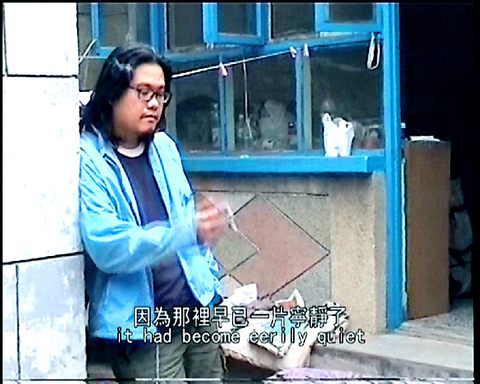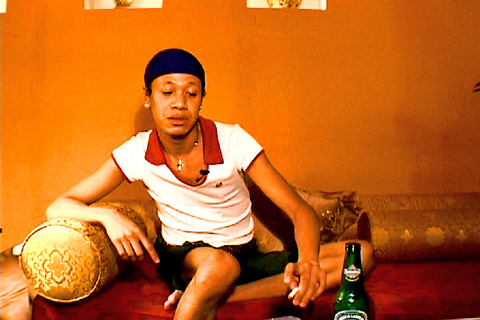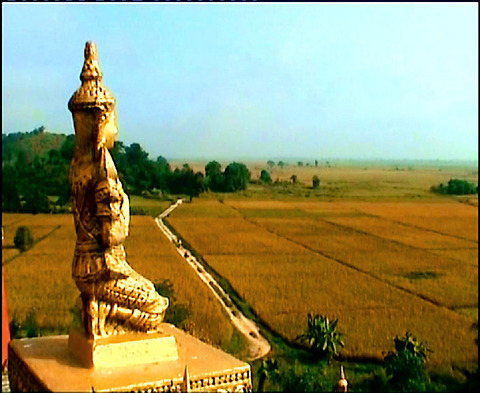If a weekend of imbibing alternative films and having a relaxed time quaffing beer with friends sounds intriguing, you need look no further than the Urban Nomad Film Fest (
Coming into its fifth year, the independent showcase presents a content-rich lineup of 40 works featuring surf and skateboard videos, short films, animations and documentaries made by underground talents from home and abroad.
Organized by the expat duo David Frazier and Sean Scanlan, Urban Nomad was set up with the aim of preserving underground creativity and demonstrating that the media is a democratic tool accessible to anyone who has something to say.

PHOTOS COURTESY OF URBAN NOMAD
"When people make films, they want the works to be seen. So we try to be more flexible about the deadline ... and screen as many of the submitted works as possible," co-founder Scanlan said.
As this year's focus is on alternative visions and documentaries, the festival offers an exciting mixture of works addressing political and social issues and subcultures from different regions, especially from the southeastern Asian countries including Singapore, Thailand, the Philippines and Malaysia.
One such film is Singapore Rebel. Banned in Singapore, the documentary is an emotionally-charged account of the political dissenter and opposition leader Chee Soon Juan, who, since 1992, has taken up the valiant mission to challenge the authoritarianism of the People's Action Party (PAP). He subsequently lost his job as a university professor, and was eventually forced into bankrupcy.

The film offers a rare chance for outsiders to see how the PAP uses oppressive methods to silence political opponents like Chee in the name of building a modern Asian society.
As co-founder and organizer Frazier said alternative film scenes in southeastern Asian countries have enjoyed strong growth in recent years. And as a young and growing alternative venue, Urban Nomad has reached out this year to fringe film festivals and curators in Thailand and the Philippines to bring out new underground voices.
"Ideally, we want Urban Nomad to become part of the underground network in Southeast Asia. Kids and young people in different places should understand each other through alternative media as opposed to big film festivals or dominant TV channels," Frazier said.

Representing the promising future of the local film community is Respire (
Highly stylish and poetically shot, the low-budget film is an inspiring example of how a work of art can be produced despite certain limitations. It was shot with old, sometimes even moldy, film rolls collected from commercial production houses in Taipei.
If you missed the opening film Surviving Beijing (

Idealistic and optimistic at first, the group settles down in the now bulldozed "Tree Village" in the suburb of Beijing, a legendary settlement of rock musicians and social drop-outs.
The film follows the failing attempts of the Malaysian rockers to get gigs and mingle with the tough crowds, and gives audiences an insight into the urban tribe of rockers who don't fit in to the fast-changing society and choose to live in poverty and make music as a social protest against China's rapid development toward capitalism.
For those who feel the three-hour-long programs of experimental film is just too much, there is a chill-out space for visitors to walk around, sip beer and enjoy a good chat with friends or strangers. At Urban Nomad, visitors will not find dark, confining theaters, but a film party where people are free to share their thoughts and feelings with other individuals.
Festival notes
What: Urban Nomad Film Fest (城市游牧影展)
Where: Huashan Cultural Center (華山文化園區), 1, Bade Rd Sec 1, Taipei (臺北市八德路一段1號)
When: Tonight beginning at 7:30pm; tomorrow and Sunday at 7pm.
Tickets: NT$200 for one day; NT$500 for a four-day festival pass.
For more information on films to be screened, visit www.urbannomadfilmfest.blogspot.com

Taiwan can often feel woefully behind on global trends, from fashion to food, and influences can sometimes feel like the last on the metaphorical bandwagon. In the West, suddenly every burger is being smashed and honey has become “hot” and we’re all drinking orange wine. But it took a good while for a smash burger in Taipei to come across my radar. For the uninitiated, a smash burger is, well, a normal burger patty but smashed flat. Originally, I didn’t understand. Surely the best part of a burger is the thick patty with all the juiciness of the beef, the

The ultimate goal of the Chinese Communist Party (CCP) is the total and overwhelming domination of everything within the sphere of what it considers China and deems as theirs. All decision-making by the CCP must be understood through that lens. Any decision made is to entrench — or ideally expand that power. They are fiercely hostile to anything that weakens or compromises their control of “China.” By design, they will stop at nothing to ensure that there is no distinction between the CCP and the Chinese nation, people, culture, civilization, religion, economy, property, military or government — they are all subsidiary

Nov.10 to Nov.16 As he moved a large stone that had fallen from a truck near his field, 65-year-old Lin Yuan (林淵) felt a sudden urge. He fetched his tools and began to carve. The recently retired farmer had been feeling restless after a lifetime of hard labor in Yuchi Township (魚池), Nantou County. His first piece, Stone Fairy Maiden (石仙姑), completed in 1977, was reportedly a representation of his late wife. This version of how Lin began his late-life art career is recorded in Nantou County historian Teng Hsiang-yang’s (鄧相揚) 2009 biography of him. His expressive work eventually caught the attention

This year’s Miss Universe in Thailand has been marred by ugly drama, with allegations of an insult to a beauty queen’s intellect, a walkout by pageant contestants and a tearful tantrum by the host. More than 120 women from across the world have gathered in Thailand, vying to be crowned Miss Universe in a contest considered one of the “big four” of global beauty pageants. But the runup has been dominated by the off-stage antics of the coiffed contestants and their Thai hosts, escalating into a feminist firestorm drawing the attention of Mexico’s president. On Tuesday, Mexican delegate Fatima Bosch staged a